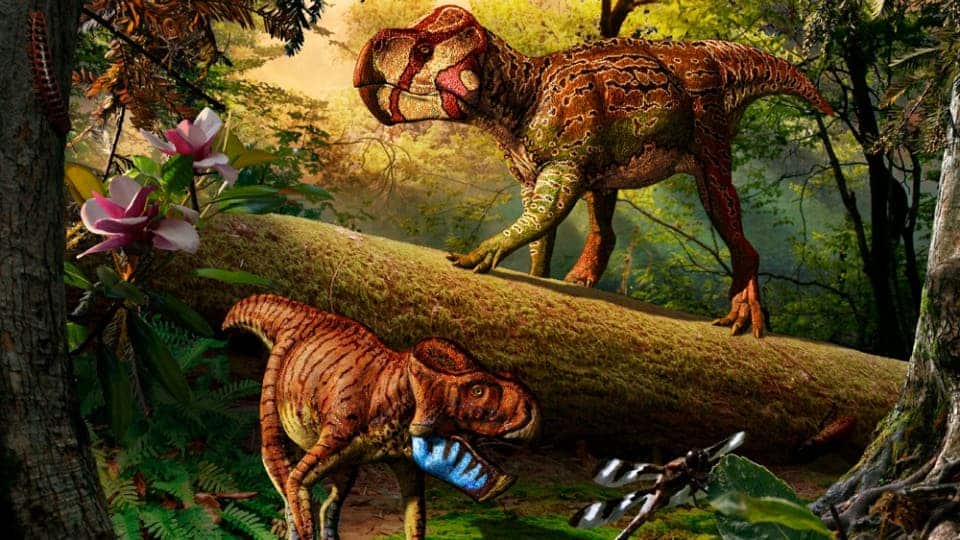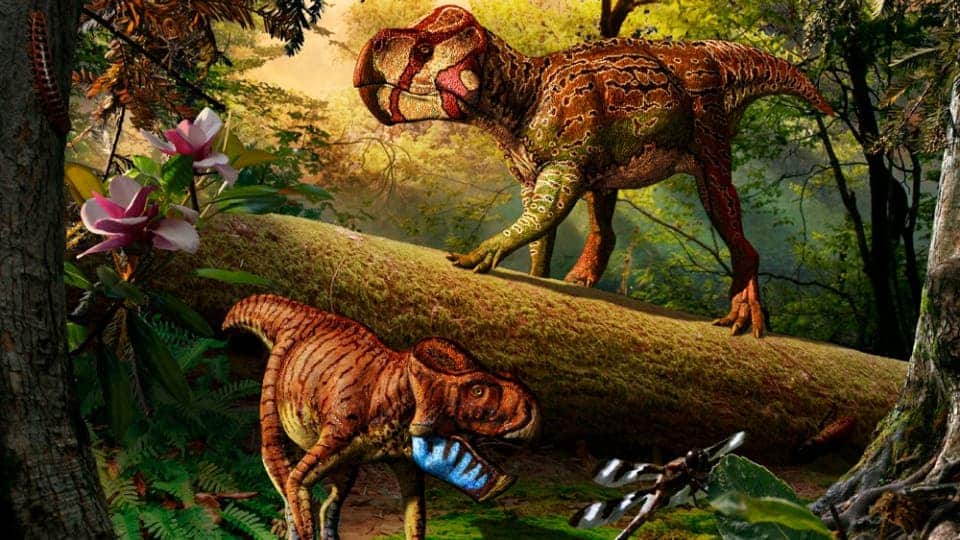
Paleontologists have recently named two new horned dinosaur species, closely related to the famous Triceratops, which were dug up from a site in Alberta, Canada some time ago. Dubbed Unescopceratops koppelhusae and Gryphoceratops morrisoni, the dinosaurs are extremely tiny, as far as plant eating dinosaurs dating back from the late Cretaceous go, and belong to the Leptoceratopsidae family of horned dinosaurs.
Unescopceratops lived about 75 million years ago, had a short frill extending from behind its parrot-beaked head, and interestingly enough possessed a hatchet-shaped jaw. It was a very small animal, however, only measuring a meter in length and weighing less than 200 pounds. Compared to Gryphoceratops, though, he was a veritable giant!
Gryphoceratops wasn’t longer than two feet, based on the complete specimen unearthed by paleontologists, making him the smallest horned dinosaur discoverer so far in North America. It also had a shorter and deeper jaw shape than any other leptoceratopsid, its characteristic shape being what earned the dinosaur its name after gryphon, a mythological best with the body of a lion and the head of an eagle. Since the dinosaur lived 83 million years ago, it’s the oldest specimen belonging to the leptoceratopsids genus, shedding extra light on how this dinosaur species first arose in North America.
“These dinosaurs fill important gaps in the evolutionary history of small-bodied horned dinosaurs that lack the large horns and frills of relatives like Triceratops from North America,” said Michael Ryan, Ph.D., curator of vertebrate paleontology at The Cleveland Museum of Natural History, lead author on the research. “Although horned dinosaurs originated in Asia, our analysis suggests that leptoceratopsids radiated to North America and diversified here, since the new species, Gryphoceratops, is the earliest record of the group on this continent.”
Cleveland Museum of Natural History via io9









